Goats at Gunsight Pass
Gunsight Lake occupies a mile-long trough at the bottom of a more or less east-facing cirque that drains northeast from the park and eventually into Hudson Bay. From the lake it’s a three-mile climb and a two thousand- foot elevation charge to Gunsight Pass and the Continental Divide. There were nine of us in the group: Marsha and I in one tent; Jeremy, Wendy, and their two-year-old daughter Kestrel in another tent; and Miles, Zerc, Pinball, and Petey, our rent-a-llamas, over by the hitching post. We’d made the six-mile hike in from the Going-to-the-Sun Road that day, and while I fished that evening, the others tidied up the cooking gear, hung our bright red llama-panniers to keep them out of reach of bears and deer, and generally got comfortable for the night.

There were some big fires west of the park—it was so dry that the national forests out that way were closed to hiking. But for us, high in the park, the only effect of the fires was to make all the views hazy and the predawn skies a deep rose. On such a dawn, after two cool nights camped at the shore of this lake, we rammed everything back in the panniers, hung them on the sides of the llamas, and marched off to conquer the pass. After the rest of us crossed the swaying footbridge across the outlet of the lake, Marsha led the “packstring” of four llamas across the shallow stream, and we began to climb.
I’d never before encountered an animal that seemed to get so absorbed in a good view the way the llamas did. Whenever we stopped at a steep place, “my” llama Miles would move right to the edge and gaze intently off into the smoky distance. I suppose a few thousand generations of South American mountain lions made him that way, but it was fun to pretend that he was as impressed by the view as we were.
They were terrific animals to hike with. They were cooperative, attentive, and enormously amusing, and their habit of humming back and forth to each other was a soothing force I missed for weeks after the trip was over. It only took them a day or so to have the rest of us quietly humming, now and then, in imitation or just because it felt good.
But the llamas weren’t prepared for goats. This was all the more surprising because they barely deigned to notice the deer we encountered on the trail and at the Gunsight Lake campsite.
Gunsight Pass’s goats, a little like the goats at Logan Pass on Going-to-the-Sun Road, were famous. Because of their “habituation” to people (which makes them both a management problem and easy to study) they’ve been the subject of repeated research projects, and we’d been assured we’d have no trouble seeing them. We didn’t.
Sad to say, neither did the llamas. We’d stopped for a snack-and-water break about three quarters of the way to the pass when Miles and Zerc, the two lead llamas, became intent on a distant white object high on the slope above us. Zerc suddenly let loose with the llama’s alarm call, a sound much like a turkey would make if it weighed about 400 pounds. It was a sound so loud that you don’t want to be standing directly by the llama’s mouth (as Marsha was) when he makes it. The goat eventually disappeared behind a low ridge, so we stowed our water bottles and headed on up the trail. I was leading Miles. Marsha was right behind me with Zerc, followed by Wendy leading Pinball and Petey strung together.
A minute later, I led Miles around a sharp turn in the trail and was suddenly confronted with a nanny and kid goat only 20 feet away. Miles bolted in a panic, leaving the trail and scrambling back downhill across a steep rocky meadow, dragging panniers, packs, and—until I had the good sense to let go of his rope—me. Though I was too busy to notice, Zerc had done the same thing, but Marsha had the good sense to let go right away.
At first I feared that the llamas were planning to retreat way down the mountain. I was at least grateful that this encounter hadn’t happened on one of the narrow places where the only choices were back down the trail or over the edge. But we soon realized that all they wanted to do was get together. As soon as all four were standing side by side facing the perceived threat, they were, well, perhaps not okay but at least willing to stand still.
It took a while to resolve this situation. We had to hold the llama’s reins very tight while the two goats bypassed us by skirting across another
meadow so they could move down the trail, but eventually we were able to restore Miles’s panniers, make sure none of us had broken anything (Miles was only bleeding a little from one leg, and my twisted ankle hardly hurt at all), and move on. From then on, for the next couple days, whenever we were hiking a steep, winding trail, I could look back and see all four llamas craning their necks as far out to one side as possible, to see what sort of bizarre surprise we might spring on them next.
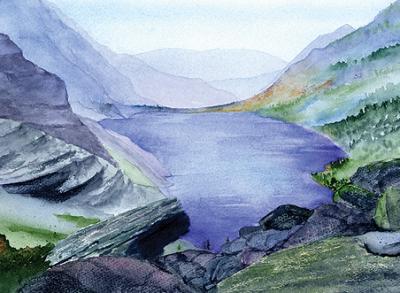
Much more than the grizzly bear, the mountain goat has been the traditional symbol of Glacier National Park. The Great Northern Railway, which had so much to do with the opening of Glacier to visitors in its early years, adopted the goat as its symbol, and a more admirable one is hard to imagine. Goats are easily seen from a number of road-side locations, and are great fun to watch with binoculars or spotting scopes. Once you see them in action on a steep mountainside (rather than slurping up tasty radiator antifreeze in the parking lot at Logan Pass), you’ll immediately appreciate why they inspire such awe. A band of goats picking its way across some nearly sheer cliff face can inspire as much disbelief as empathetic nervousness. In his fascinating book A Beast the Color of Winter: The Mountain Goat Observed (1983), ecologist Douglas Chadwick described how the goat’s exceptional traction and tremendous chest and shoulder muscles allow it to move around:
I have seen mountain goats perform what amounted to one-handed chin-ups. Having only a scrap of momentum behind them they reached out, hooked one hoof on an overhead shelf, and hauled themselves up by it alone. So, while it’s wonderful to see one along a road, the real treat is seeing one, even at a great distance, on one of the high steep places they make their home.
A two-thousand-foot pass isn’t that hard a climb if a llama is carrying all your gear, and we enjoyed a leisurely lunch by the stone shelter house at Gunsight Pass, letting the stiff breeze dry us off as we absorbed both the view and the idea of being on the Continental Divide. From now on, all the water we saw would be draining to the Flathead Valley, the Columbia River, and the Pacific Ocean. Looking west down from the pass, we could see our next destination, Lake Ellen Wilson, about a thousand feet lower and a couple of miles by trail away.
All the way down, the llamas, especially Zerc, scanned the nearby hillsides nervously. Zerc occasionally blasted another alarm call into Marsha’s ear just to make sure we didn’t spend too much time stopping to enjoy the long, flower-bordered cascades that tumbled from snowfields and glacial remnants on the slopes of Mount Jackson to our south. It worked; Marsha, surly and nearing deafness in one ear, insisted we keep moving until we were at the lake.
But that evening the goats abandoned their highlands and joined us in camp. Habituated to people by several decades of foot traffic, the Gunsight goats spent their nights right in the camping area, where they sought out the salt left where people and livestock have urinated, or the sweet taste of toothpaste spit on the vegetation (they’ve even been known to lick sweat from the arms and legs of hikers, but we didn’t get that cozy with them). This familiarity, both charming and dismaying, at least allowed me to get some close-up photographs of goats, but when I looked at them later they all seemed unreal; my mind kept telling me that goats that close must be taxidermic mounts. Who would believe that a wild animal would let people get so close?
All night, these animals that I’ve always admired as a great symbol of remote and untouchable wildness brushed past our tents, clambered around on boulders, and repeatedly approached the llamas. I don’t think Zerc slept at all; every hour or so during the night I’d hear him cut loose again, and I’d drift off wondering if the other llamas wished he’d shut up, too.
Excerpted from This High, Wild Country: A Celebration of Waterton-Glacier International Peace Park, by Paul Schullery, with paintings and drawings by Marsha Karle; published by the University of New Mexico Press, 2010.


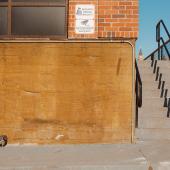
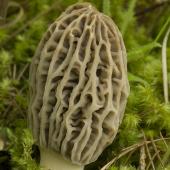
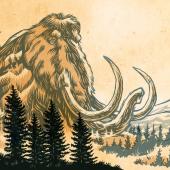
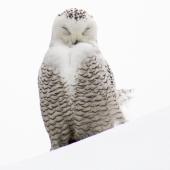
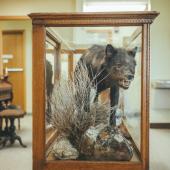
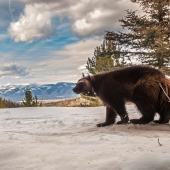
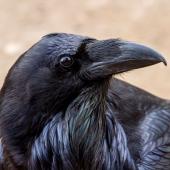

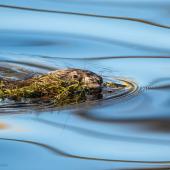
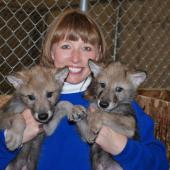
Leave a Comment Here